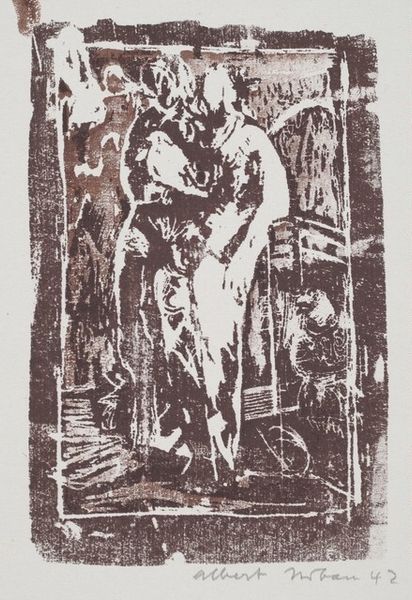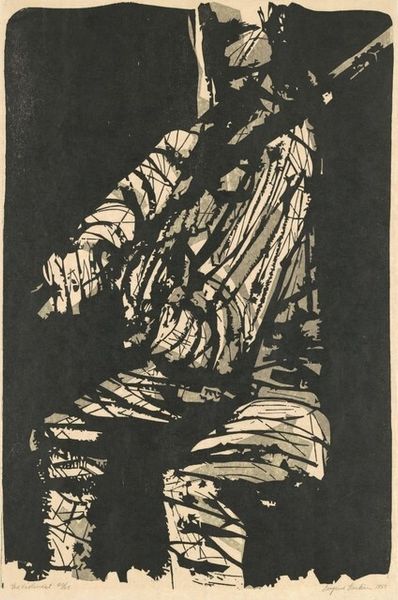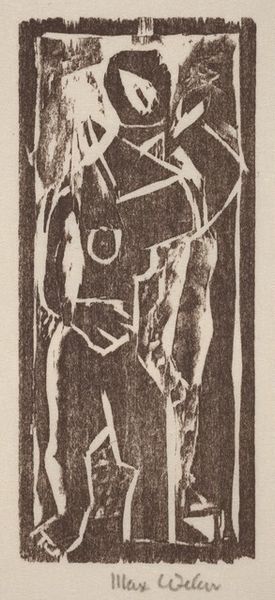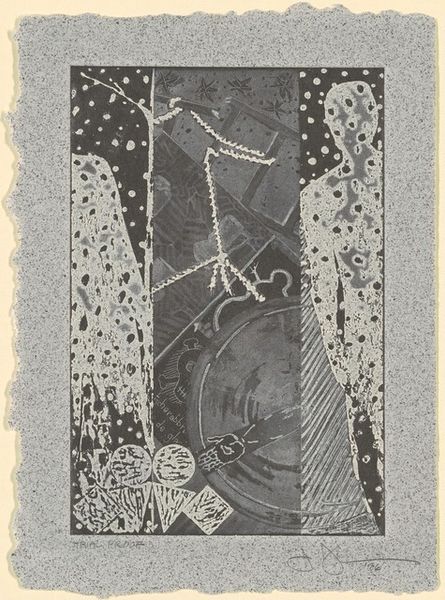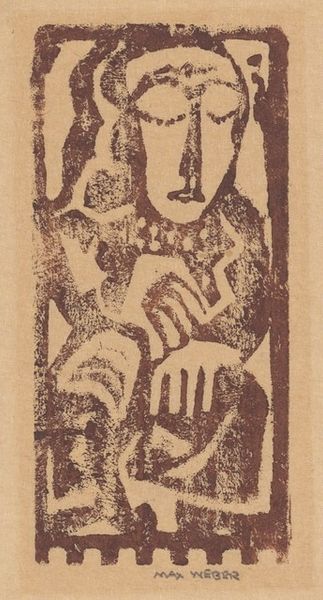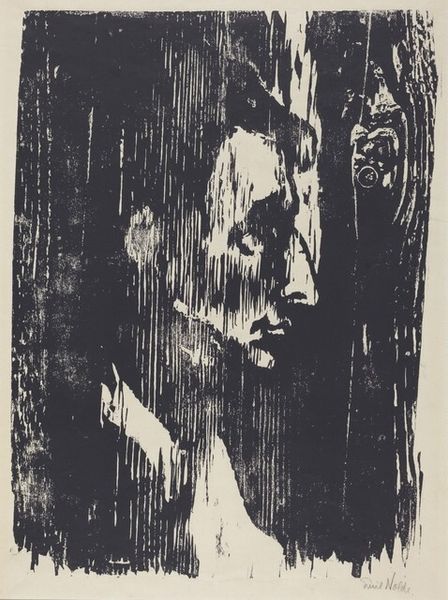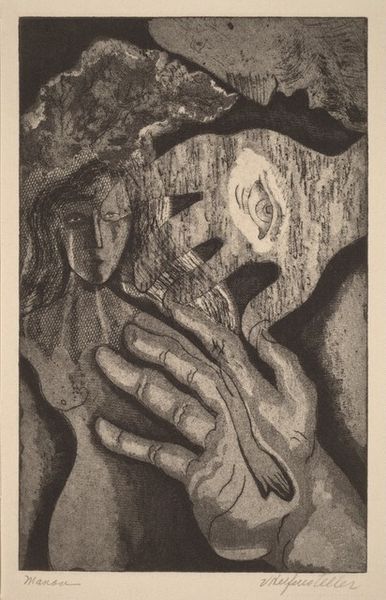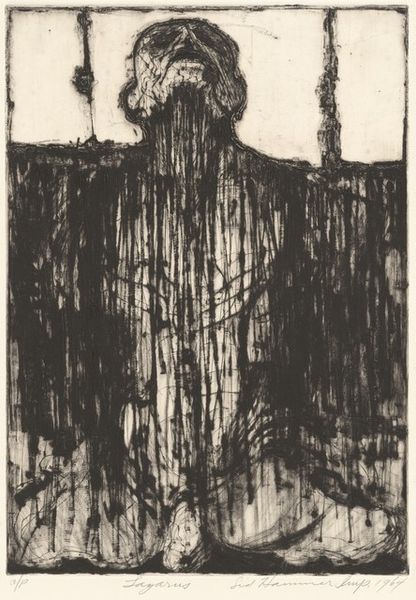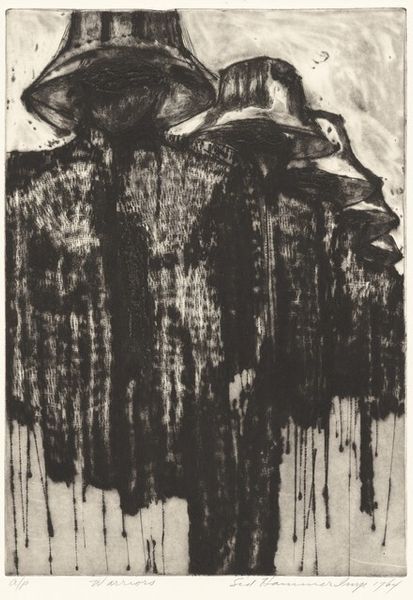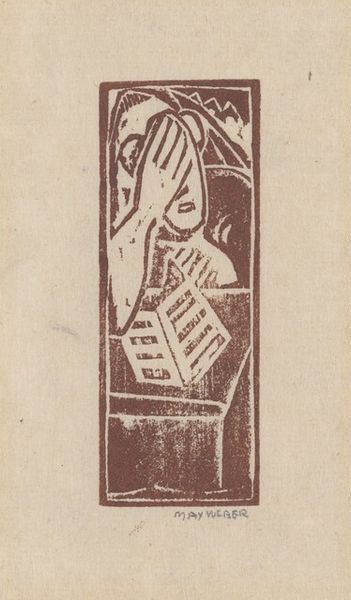
print, woodcut
# print
#
figuration
#
geometric
#
expressionism
#
woodcut
#
abstraction
Dimensions: image (irregular): 19.1 x 8.6 cm (7 1/2 x 3 3/8 in.) sheet: 33 x 25.4 cm (13 x 10 in.)
Copyright: National Gallery of Art: CC0 1.0
Curator: Here we have Max Weber’s "Large Primitive Head in Profile," a woodcut print dating from around 1920-1921. The stark contrasts and bold geometry really grab your attention, don’t they? Editor: Absolutely. It has a haunted quality; that single, staring eye dominates the composition. There's something unsettling, even vulnerable, in its gaze. It reminds me a little bit of Edvard Munch's work. Curator: Yes, definitely unsettling. The Expressionist influence is clear here, particularly in the way Weber distorts the human form to convey emotion. And it’s also fascinating to consider his place as one of the earlier proponents of abstraction in American modernism. It’s a simplification of form, but loaded with meaning. Editor: And how does it relate to the broader sociopolitical currents? Considering it’s made after the end of the first World War. Curator: Post-war America was rife with anxieties and a rapidly changing social landscape. Weber, with his roots in both European Expressionism and American modernism, provides us a visual window into that. Many were grappling with trauma, and this primitive aesthetic became one way to give voice to this angst and even project a path forward into a changed and complex society. Editor: The "primitive" element, though, is one I'm keen to examine more closely. Was he engaging with Primitivism, and, if so, was he actually engaging with its power or contributing to a trend in ways that re-centered his own view of artistic practice? Curator: It's a complex question. Weber was interested in non-Western art and ideas, that much is clear, as were many artists of the time. We have to always remain aware of potential for exotification in these appropriations, and that question helps drive a dialogue about cultural understanding or cultural theft. Editor: Absolutely. This makes us confront our assumptions about what’s considered “primitive” and forces us to engage with questions of representation. But, seeing art grapple with those difficult questions helps keep art as a field constantly willing to interrogate itself, hopefully sparking the same among viewers. Curator: A powerful conversation, and one which "Large Primitive Head in Profile" makes visible, asking us to question aesthetic expression while staying sensitive to complex narratives. Editor: A truly insightful note upon which to conclude our thoughts, recognizing that art should make the viewer willing to expand their perspectives.
Comments
No comments
Be the first to comment and join the conversation on the ultimate creative platform.
